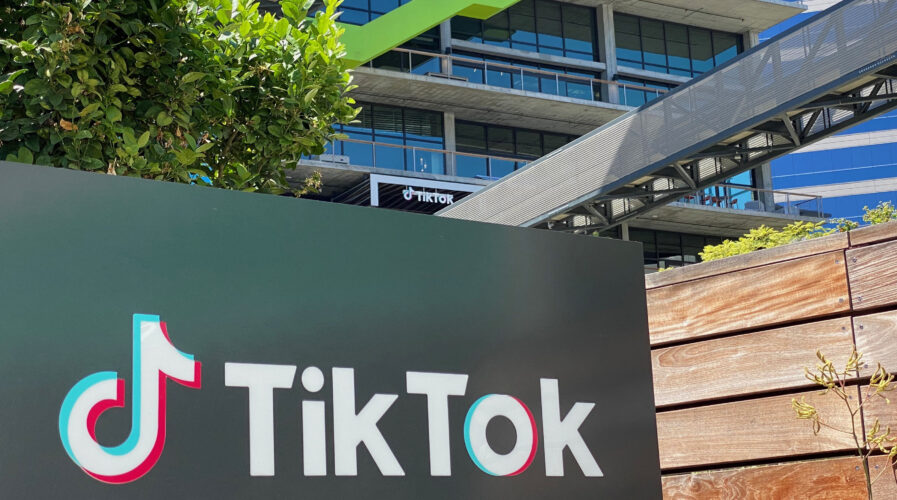
TikTok continues to dominate the shoppertainment industry. (Photo by Chris DELMAS / AFP)
Consumer behavior in e-Commerce moving towards “shoppertainment”
Despite the challenges many businesses faced during the COVID-19 pandemic, e-Commerce was able to ensure that many of them could still carry on with their business. While consumers could not shop physically, online shopping proved to be the next best option for them.
The beauty of e-Commerce is that it is not just for selling physical products, but also for services. Aside from listing on a services marketplace, companies could also sell promotional e-vouchers, or include a shopping cart system on their own websites. Naturally, the next important step for them was to understand consumer behavior.
Realizing the potential of e-Commerce, banks, large enterprises, small and medium enterprises (SMEs) and even government agencies begin adopting e-Commerce. Fintech became an enabler of e-Commerce with more startups developing digital payment solutions, and businesses turned to artificial intelligence to help improve their operations and customer experience.
Consumer demand for real-time payments, too, is on the rise in Malaysia as the pandemic accelerated demand for rapid, contactless payments, according to research by ACI Worldwide and YouGov.
With increased internet penetration and smartphone use, especially within emerging economies in the Asia Pacific (APAC), consumers now expect convenience and speed with mobile apps and instantaneous payments, an area in which the traditional financial industry has struggled to keep up.
The evolution of consumer behaviors towards ads
With innovative technologies supplementing the e-Commerce experience, businesses are now looking at how they can better understand consumer behavior. Leveraging insights from data analytics, businesses are not only understanding how the demographics of their customers impact their purchasing decisions, but also how customer engagement can be improved.
According to Twilio’s annual State of Customer Engagement Report, 98% of businesses reported that video communication with customers accelerated more than other channels during the pandemic. From virtual conferences to workout classes to online learning, the increased consumption of video and audio content has impacted consumer preferences and behaviors, especially in response to ads.
With the rise of short video formats and platforms such as Instastories and TikTok, quick, snappy videos are becoming the most outstanding media to influence shopper trust and behavior. A Nielsen Global Authenticity Study commissioned by TikTok showed that 83% of users prefer to see video ads from brands over gifs or text posts. As such, short videos are becoming the format of choice for brands to generate more traction with customers.
According to Hakim Mehmood, GM of Voice and Video at cloud communications provider Twilio, the “rise of virtual experiences and the popularity of platforms like Clubhouse and TikTok have signaled that the next big channel for customer engagement is live audio and video streaming.”
The rise of “Shoppertainment”
Shoppertainment, a term used to describe the convergence of entertainment shopping videos and commercials, has been increasing. Countries with movement restrictions and deferred plans caused by Covid-19 have turned consumers to shopping with entertainment for that feel-good factor. In TikTok’s survey, one in three users stated that they want to make purchases and feel good about themselves.
“Shoppers expect not just to be sold to, but to be entertained as well. Instead of people searching for products, products are now searching for people” shared Ng Chew Wee, Head of Business Marketing, TikTok Southeast Asia.
Consumer behavior in online shopping has moved towards “shoppertainment”, and businesses seeking to remain competitive need to catch up.
At the same time, the convenience of a variety of digital payment options has affected consumer behavior. Innovations in digital payments, especially with more companies looking to offer buy now, pay later options, are growing in popularity as well.
A recent study by independent identity provider Okta showed the shifting perceptions of trust amidst a rapidly digitalizing world in 2020. When it comes to building a brand’s digital trust, consumers care most about a company’s service reliability, strong security, quick response times, and good data handling practices.
Asian consumers are most likely to lose trust in brands that intentionally misuse or sell personal data, followed by brands that fall prey to a data breach. Digital trust has a big impact on brand awareness and reputation, and ultimately where Asians spend their money online – 50% of Asian respondents have lost faith in a company due to a data breach or security event.
For brands, consumer loyalty is hard to gain and easy to lose. As organizations look to not only provide the best service and experience to customers but also ensure customers stick with their brand and keep coming back, businesses need to be able to capture this market with techniques such as shoppertainment, but also maintain and build strong digital trust.
READ MORE
- Ethical AI: The renewed importance of safeguarding data and customer privacy in Generative AI applications
- How Japan balances AI-driven opportunities with cybersecurity needs
- Deploying SASE: Benchmarking your approach
- Insurance everywhere all at once: the digital transformation of the APAC insurance industry
- Google parent Alphabet eyes HubSpot: A potential acquisition shaping the future of CRM
